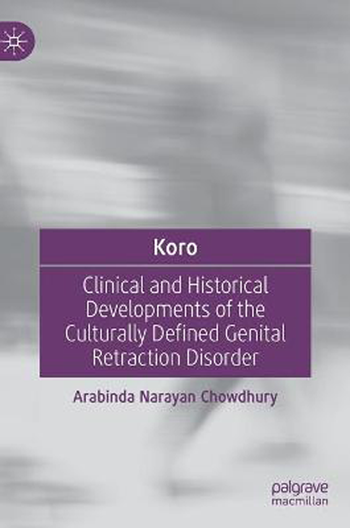
This is not a book as such but a comprehensive compendium of publications on Koro since the condition was first introduced into the psychiatric literature in 1895 by Dr Blonk, a Dutch physician. Chowdhury gives us the original Chinese medical descriptions dating back to 403–221 BC and including the records of Suo-Yang (the classical term for Koro) in which afflictions of the liver are implicated causing shrinking of the penis and death. The classical form of Koro, we learn, involves perception of acute retraction of the penis or in females the breast or vulva, accompanied by acute panic, fear of impending danger including death and preventive manoeuvres to arrest complete retraction. Usually these features occur against a backdrop of folk belief about Koro.
It was intriguing to discover that there are symbolic animal connections, the most interesting being the link to the tortoise and this is true both for China and India. There is a symbolic link between the head of the tortoise and the glans penis and the self-defensive retraction of the tortoise's head and neck into its shell in response to threats. There is focus too on Koro epidemics in Southeast Asia and India and the emerging Koro-variant seen in Africa, presenting as penis theft. In this variant, often occurring in epidemics, the victim discovers loss of their penis after meeting a stranger who is then accused of genital theft. There are forensic implications here because the accused can be killed by mob action or in some cases arrested and charged with genital theft.
One of the fundamental issues that Koro illustrates is how to map a specific psychiatric condition that occurs in a given cultural context into the systems of Western-derived nosology. So, Koro is classified in DSM-5 as other specified obsessive–compulsive and related disorders. A classification that ignores the matrix of beliefs that make Koro recognisable and comprehensible thereby denuding it of its symbolic value.
This is not a book for the general reader. The literature is not synthesised into a whole. Its advantage is that there is an exhaustive listing and summary of the most important publications. It will serve as a great source for researchers in the field.



eLetters
No eLetters have been published for this article.